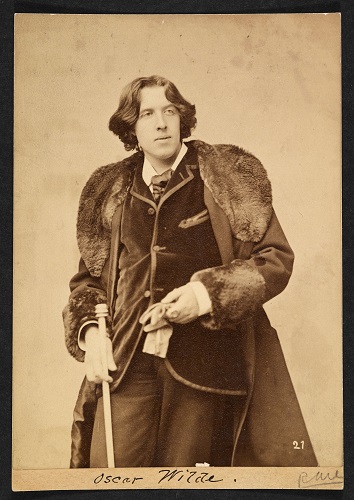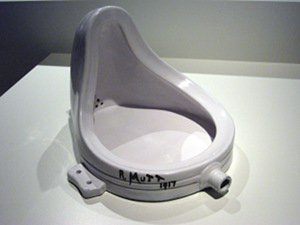The auction house, Christies, recently held an auction of AI Art. On their website, in describing AI 'art', they posted this sentence: "AI art has emerged as a phenomenon in which artificial intelligence helps wield the brush, compose the melody, even direct the narrative."
Is Christies selling art, or is it selling something else?
In writing this blog, I came across many definitions of art. This one, from a website called 'Artchi' seems to be pretty standard:
At the heart of art lies the essence of human expression, creativity, and emotion. Artists harness their creative energy to produce works that capture their innermost thoughts, feelings, and experiences. Through their art, they communicate with the world, inviting viewers to step into their unique perspective.
"...their innermost thoughts, feelings and experiences
By this definition, if we accept it, AI cannot produce art. AI can produce a fine, perfect product but that product cannot be art, because AI does not have a 'self'. It does not have innermost thoughts, feelings and experiences. Therefore it cannot share these with others. It cannot share what it does not have.
 Oscar Wilde. Photo by Sarony, 1882. Public Domain
Without a personal identity, a consciousness of being and sharing, there is no art. Oscar Wilde, notorious writer of the Aesthetic Movement declared, famously, "Art is the most intense mode of individualism that the world has known.
Oscar Wilde. Photo by Sarony, 1882. Public Domain
Without a personal identity, a consciousness of being and sharing, there is no art. Oscar Wilde, notorious writer of the Aesthetic Movement declared, famously, "Art is the most intense mode of individualism that the world has known.
The theme of self, of human existence and awareness, is at the heart of my all-time favorite play: Peer Gynt. In the play, the main character, Gynt, struggles to preserve the one thing he has left at the end of a useless life: his self. He has been a rogue and a ne'er-do-well, and has never distinguished himself in any way. At the end of this wayward life he is threatened with annihilation. He will be melted down and absorbed into a molten mass where his individuality will be no more. His very existence will be erased.
 Henrik Klausen, in the role of Peer Gynt, 1876. Photo by Ernst Aubert. Public domain.
Gynt is frantic. He'd rather go to hell, literally, than disappear. He cries out:
Henrik Klausen, in the role of Peer Gynt, 1876. Photo by Ernst Aubert. Public domain.
Gynt is frantic. He'd rather go to hell, literally, than disappear. He cries out:
...naturally we make a fight To keep the self with which we came Into the world
And yet, do we? Unlike Gynt, we relinquish our selves. For convenience, for speed, for effect, we turn from our self to a machine. The very act of creating is exquisitely human, and yet we stand back and tell a machine to take our place, to create, to write a story, to paint a picture.
AI is not an individual. It is a construct. The machine that creates AI may itself be a work of art--in much the same way Duchamp's urinal was art, but AI, a machine, cannot create art.
 Marcel Duchamp's urinal. Credit:24oranges.nl. CC license 2.0
Marcel Duchamp's urinal. Credit:24oranges.nl. CC license 2.0
During WWII, when the Nazis were plundering art across Europe, an unsuccessful artist, Han van Meegeren decided to try his hand at forgery. Van Meegeren was quite successful. He perfected a technique that mimicked the style of a Dutch master, Johannes Vermeer. The forgeries sold for millions. One painting, bought by Goebbels in 1937, went for more than $5,000,000 (value converted to today's dollars).
After the war, van Meegeren revealed that the paintings were fake. He confessed because he was accused of having collaborated with the enemy (selling classic art to Nazis), and faced the death penalty. As soon as it was discovered that the paintings were not 'real', the value plummeted to nothing. Why? What was the difference in the painting between the moment before the forgery was discovered and the moment after it was discovered? There was the same level of skill. The same technical expertise. Yet because the painting wasn't 'real', because it wasn't a true expression of Vermeer, of the master, people did not consider the painting important art any more.
 Van Meegeren forgery, The Men at Emmaus. Museum Boijmans van Beuningen, Rotterdam. Public domain
Van Meegeren forgery, The Men at Emmaus. Museum Boijmans van Beuningen, Rotterdam. Public domain
So, we come back to the question, "What is art?" Apparently it is not the perfect copy produced by a forger. That copy lacks the essentials defined in the quote at the top of this blog: Artists harness their creative energy to produce works that capture their innermost thoughts, feelings, and experiences. This certainly is not what van Meegeren was doing. He was doing what AI can do today: analyze and mimic. There was no expression of self, of innermost thoughts and feeling. It was all a pretense.
So far in this blog I've referred to Oscar Wilde, and an Internet art website to help me define art and its relationship to self, to the individual human. Let me now turn to a source who for some may hold a little more authority, not only on art, but on any subject: Confucius.
Confucius is one of the earliest (maybe the earliest) authorities who related art directly to human character. According to Confucian teachings, artistic practice is a way of refining the self. Calligraphy, is included as one of the Six Arts. These are believed to cultivate, skills, character and inner strength.
As one of the Six Arts, calligraphy was believed to reveal the truth about the writer's character. Through the stroke of the brush the calligrapher expressed personality. With each stroke, the artist made a creative choice, and it is in these choices, in the way pressure is applied or slanted that a person's character is manifested.
To support my argument that AI cannot create art, I've quoted a philosopher, a writer, and an Internet website. My last piece in this argument comes from the world of science. An article I found in a psychology journal looks at the relationship between art and identity. The journal is Frontiers in Psychology, and the article is entitled, The Aesthetic Self. The Importance of Aesthetic Taste in Music and Art for Our Perceived Identity.
To prove their hypothesis, the authors look at four different studies that included many hundreds of human subjects. The researchers were trying to find an answer to this question: To what extent do aesthetic taste and our interest in the arts constitute who we are? They found their answer, after analyzing the results from the four studies: "...our aesthetic engagements are a central component of our identity".
In concluding my argument that AI cannot create art, I'll return to art to help me express my thoughts. I refer to Ibsen, and his hapless character, Peer Gynt. This soul clings to his identity, to his unique self. This man, who had passion for almost nothing, is passionate about being himself. He does not want
...to be swallowed up Like a speck in a mass of strange material...losing all The attributes that make a Gynt-- That fills my inmost soul with horror
When I write, or draw, or make a collage I will also be my self. For me it is a joy to create. It is an expression of self, and nothing else I do gives me exactly that exact kind of joy. I can't imagine turning the experience over to anything, or anyone.